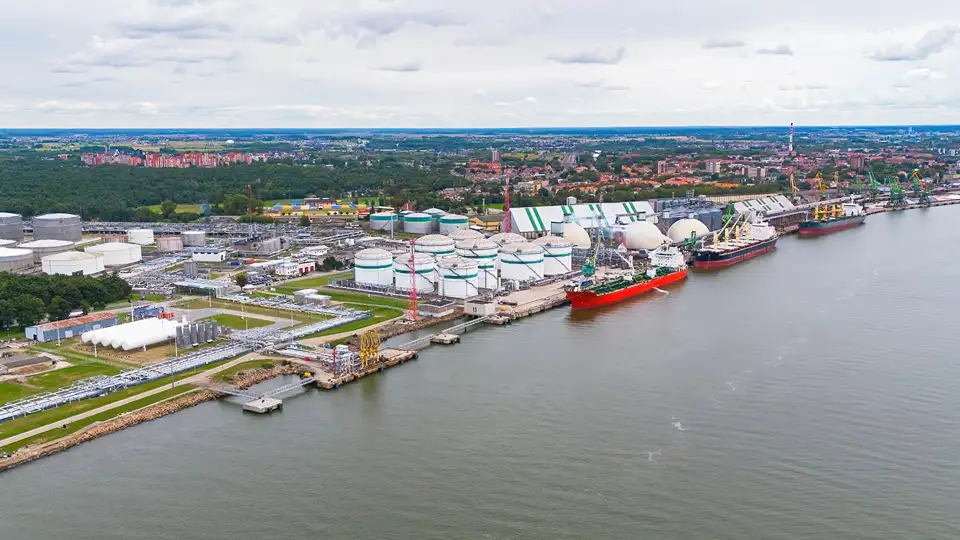Introduction
Poland has embarked on one of its most ambitious maritime infrastructure initiatives — the Cape Pomerania project, a €2.35 billion investment aimed at transforming the nation’s Baltic Sea port network. As part of the broader Poland port development strategy, this massive undertaking will significantly enhance cargo handling capacity and strengthen Poland’s position as a key player in Northern European maritime logistics.
The announcement was made by Deputy Infrastructure Minister Arkadiusz Marchewka, who emphasized that this project represents a new era for the Świnoujście and Szczecin seaports.
Project Overview: The Cape Pomerania Vision
The Cape Pomerania project marks a milestone in Poland’s modern port expansion history. With a total investment of PLN 10 billion (approximately €2.35 billion), the project aims to establish one of the most advanced maritime facilities in the Baltic region.
This initiative will reshape the port of Świnoujście through comprehensive infrastructure enhancements. The primary goal is to create a deepwater gateway capable of handling the world’s largest container vessels, something previously unattainable in the Baltic Sea due to draft limitations.
Key Infrastructure Components
Central to the Cape Pomerania project is the construction of modern port infrastructure designed for efficiency, capacity, and resilience.
- New Quay Wall and Breakwater: A 3-kilometer-long quay wall with a strong breakwater system will form the backbone of the port’s expansion.
- Deep Port Basin: The project includes a 17-meter-deep fairway and port basin to accommodate ultra-large container ships.
- Deepwater Container Terminal: Spanning 1.3 kilometers, this terminal will boast a capacity of 2 million TEU (twenty-foot equivalent units) annually. It will be equipped to handle three major vessels simultaneously, two 400-meter ships and one 250-meter ship.
These developments will significantly strengthen Poland’s port development framework, ensuring the nation can compete with other leading Baltic ports on throughput and operational excellence.
Engineering and Dredging Works
An essential component of the Cape Pomerania project is large-scale dredging. Approximately 20 million tons of sand will be excavated from the port’s approach channel and the newly planned port basin.
Rather than being discarded, the dredged material will be repurposed to create new land, forming a 186-hectare site that will house the new terminal infrastructure. This sustainable approach demonstrates Poland’s commitment to environmentally conscious maritime engineering and aligns with modern global standards in Poland’s port development practices.
Project Timeline and Implementation
According to official reports, the Cape Pomerania project is scheduled to move forward rapidly. The tendering and award phase is expected to conclude by the fourth quarter of 2026.
Construction is anticipated to begin in 2027, with the new terminal set to open in 2029. This timeline underscores the government’s determination to modernize the port system efficiently and deliver measurable economic impact in less than a decade.
Strategic Importance for Poland and the Baltic Region
The Cape Pomerania project carries strategic significance for Poland and its regional partners. Once completed, it will allow the Świnoujście port to accommodate the largest container ships in the world, dramatically increasing Poland’s maritime trade capacity.
The project will not only enhance connectivity for Polish exporters and importers but also position the country as a competitive logistics hub for Central and Eastern Europe. As a key part of the Poland port development roadmap, this initiative reinforces the government’s long-term strategy to diversify trade routes and attract global shipping lines to Polish ports.
Leadership and Vision
Deputy Infrastructure Minister Arkadiusz Marchewka has highlighted that the Cape Pomerania project is a fresh start for Świnoujście. Previous concepts for the port expansion lacked funding and coherence, but the new plan ensures financial backing and technical precision.
Marchewka described it as the most ambitious project in the 75-year history of the Szczecin-Świnoujście Seaports Authority. His remarks emphasize the leadership’s confidence in transforming Poland’s maritime infrastructure into a model of innovation, sustainability, and international competitiveness.
This visionary approach aligns with Poland’s port development agenda, ensuring that the nation’s ports serve as reliable gateways for future trade growth.
Conclusion
The Cape Pomerania project stands as a defining moment for Poland’s maritime future. It embodies the nation’s drive toward modernization, sustainability, and global integration.
By combining large-scale engineering, sustainable dredging practices, and forward-looking infrastructure design, the Cape Pomerania project will redefine port operations in the Baltic Sea and strengthen Poland’s economic resilience.
As Poland advances toward completion in 2029, this milestone underlines the country’s commitment to maintaining its leadership in Poland port development and its long-term vision for a dynamic, competitive maritime economy.
